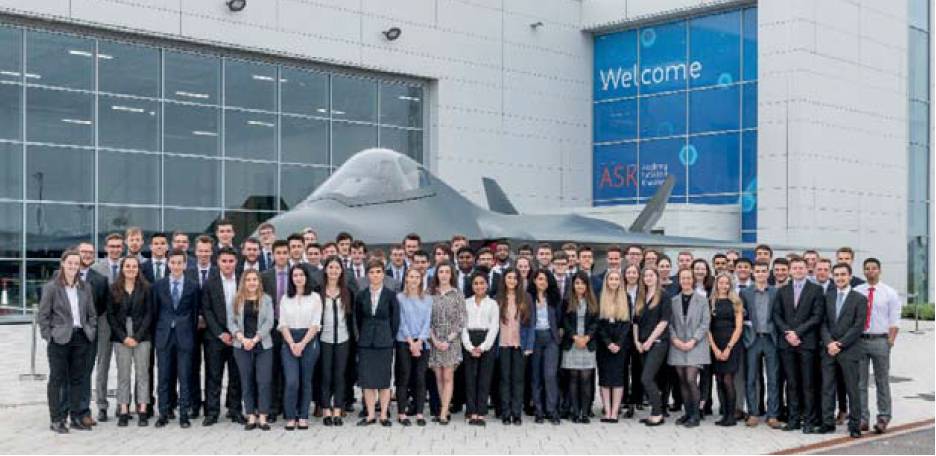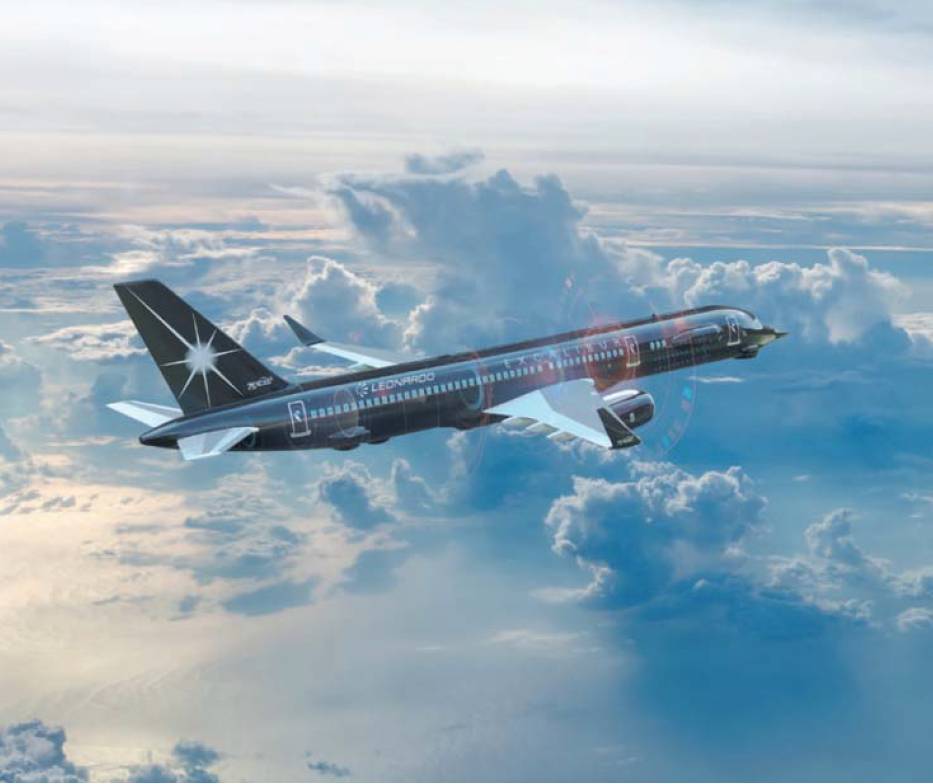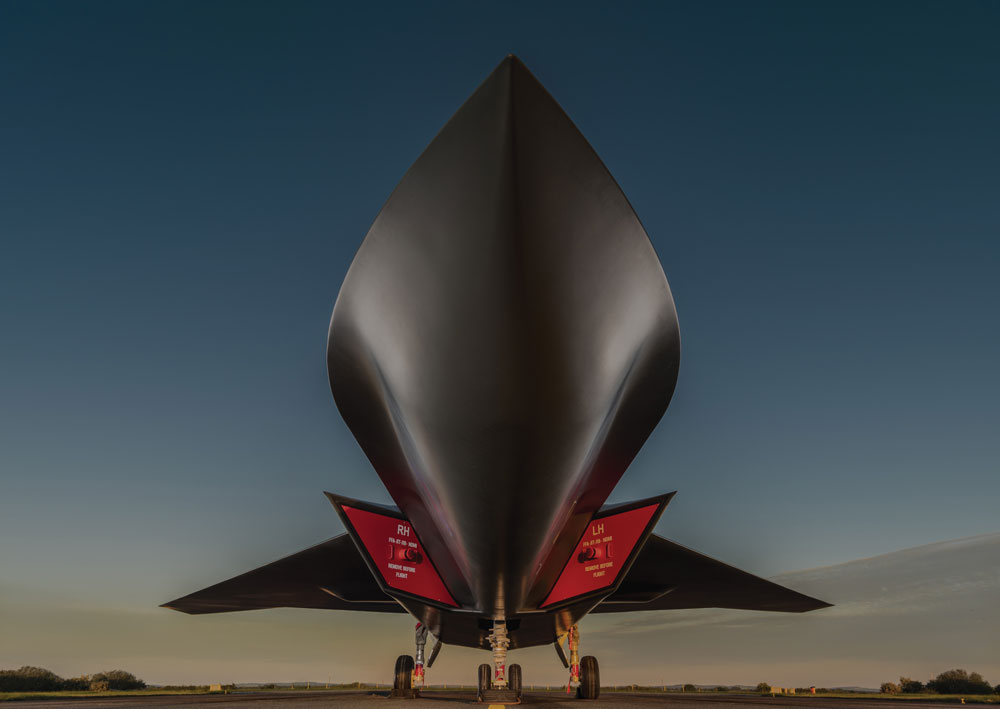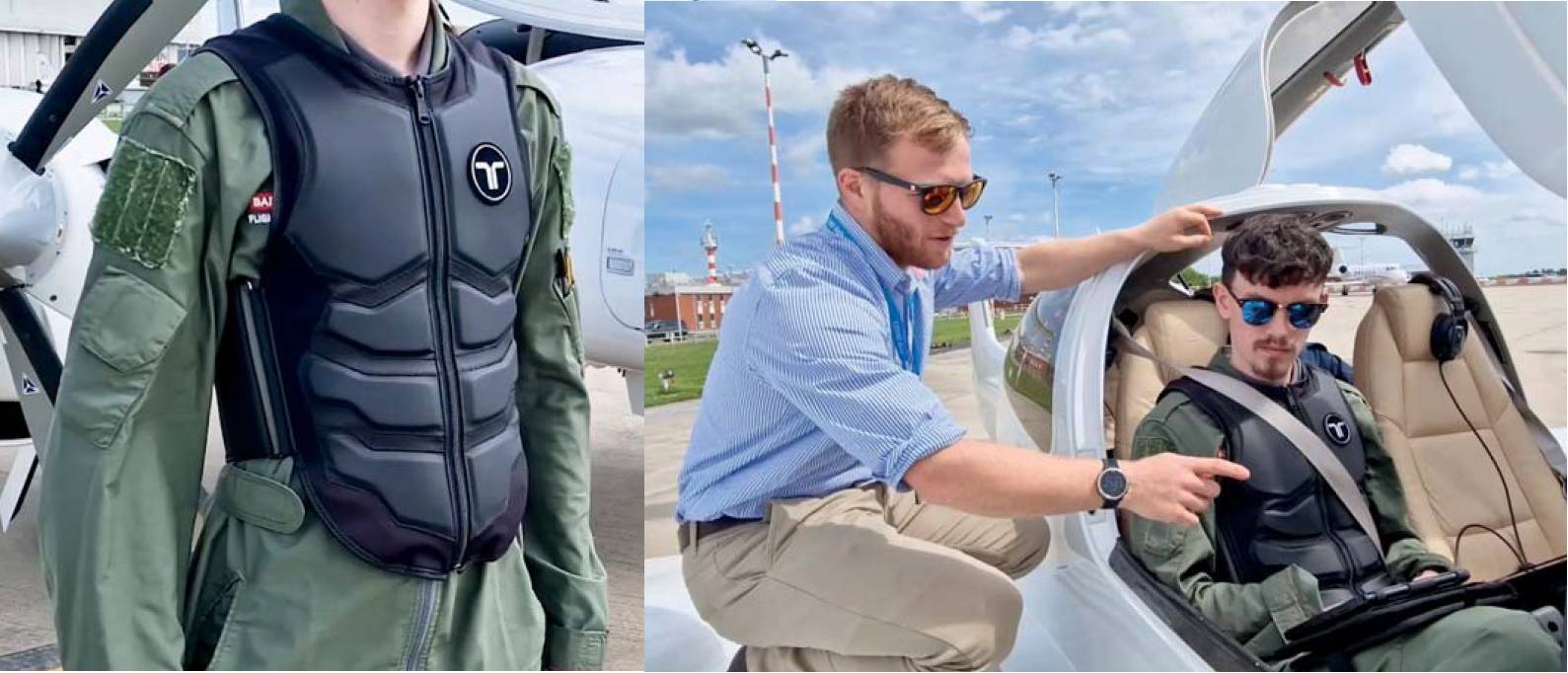- Stocker stresses that although the ‘core platform’ of the Tempest fighter revealed in mock-up format is the most recognisable part, the FCAS TI work currently under way is far larger, with four other key areas:
- adjuncts – which include ‘loyal wingmen’ UCAVs and which make this a ‘system’
- C2 – or the information aspect “it’s that digital capability, exploitation of data and that digital thread that runs through this that is such a critical enabler to the joined-up network capability,” says Stocker
- Effect – which includes kinetic weapons from MBDA and non-kinetic effectors
- Through life services, including training, support and upgrades – again says Stocker, the ‘digital thread’ “absolutely runs through all of that as well. For future sustainment, it’s massively transformed through digitalisation”.
This development though, is not just ‘big data’ and faster computers, but a cultural revolution going on inside BAE systems and its partners with “scrum teams pushing down responsibility, decision-making as far down the system as we can and allowing those who are closest to the work to make the decisions,” says Stocker. This agile development is removing the barriers and traditional time constraints.
 ‘Generation Tempest’ is already shifting the demographics as BAE and its partners recruit apprentices and graduates. BAE Systems
‘Generation Tempest’ is already shifting the demographics as BAE and its partners recruit apprentices and graduates. BAE Systems
International by design
Unlike many previous British combat aircraft programmes, which were aimed at fulfilling UK and European requirements first, with export orders added on as an afterthought, Tempest has been created to be ‘international by design’ from the beginning. It has also learnt from experience on the US-led international F-35 programme, and if that locked-down programme model was a ‘set menu’, Tempest is set to be a ‘6th generation fighter buffet’ – with partners able to pick and choose which bits suit them best. For example, although Italy has joined Tempest itself, Sweden is a partner on the wider FCAS, looking to feed any technology back into its Gripen E. This partnership approach and ‘non-linear‘ development mean that Tempest is thus highly attractive to international partners who will be able to ‘mix and match’ their budgets, participation and requirements to get the absolute most out of the programme.
Significant news later this year is likely to be a deepening and broadening of the partnership with Japan, who is already collaborating with Rolls-Royce for engines on its F-X and sensor technology with Leonardo. Japan, an island nation, with similar air defence requirements to the UK, and an extremely advanced high-technology industrial base, would, therefore, be an extremely valuable partner.
Indeed, should Japan end up joining Tempest/ FCAS as a partner, it is difficult to underestimate the geostrategic shift of this co-operation – marking a break from 70+ years of Tokyo’s dependence on US military aircraft from the F-86 to the F-15J and vindicating ‘Global Britain’ and its ability to strike new deals in an agile and speedy manner.
Stocker stresses that the international aspect and the investment it provides is key to Tempest, refuting claims that the programme is underfunded by the UK: “From my perspective, it’s always been absolutely clear that an international programme is critical to this”.
Generation Tempest
However, Team Tempest is not just about developing a futuristic fighter and combat air system. It is also about retaining key knowledge, passing this on to the younger generation and inspiring future generations of aerospace professionals. Prior to the launch of Tempest, there was a concern that with fewer and fewer large military aviation programmes, the UK’s combat aerospace sector could wither and die, as the older generation retire. The Eurofighter Typhoon dates from the 1980s – some four decades ago. There was then, serious worries that this skill gap would widen and that UK plc would eventually lose this critical in-house experience, skills and knowledge.
THIS SYSTEM WILL GENERATE AN EXPONENTIALLY GREATER AMOUNT OF DATA THAN ANYTHING THAT’S BEEN DONE PREVIOUSLY FROM A COMBAT AIR POINT OF VIEW
John Stocker
Business Development Director – Future Combat Air System, BAE Systems
However, the unveiling of Tempest and the ‘buzz’ generated by the biggest new fighter project in decades now seems to be paying off – attracting a younger ‘generation Tempest’ into the industry to work on this advanced project.
It is already changing the demographic among Team Tempest partners with over 1,000 young apprentices recruited between 2018 and 2020.
This has noticeably shifted the age profile in Team Tempest from around 14% under 30 back in 2018 to around one fifth today – and 40% of workers are under 40. Indeed, there is now a TECN, (Tempest Early Careers Network), for these young apprentices and graduates who have recently joined and who will be followed by others in the future.
As Stocker notes: “Frankly a lot of the people here are just entering their early careers now but as well there will be lots of people who are still at school or not yet born, who are essentially going to be the people who will be delivering this programme”.
Unsheathing Excalibur
Meanwhile, at an airfield at Lasham in the south of the UK, a Boeing 757 is currently awaiting conversion to a unique flying test bed to support Team Tempest. Called Excalibur and to be converted by 2Excel Aviation and with Leonardo as prime contractor, this 757 will be packed with sensors, test equipment and a virtual cockpit as a sixthgeneration combat aircraft test bed. A sovereign UK capability (with additional capacity for non-FCAS test work) it will be the only such advanced flying laboratory outside the US or China. AEROSPACE understands that 2Excel is already gearing up for a major recruitment push for engineers and technicians to work on converting this airliner into a unique technology demonstrator that will test the radars, sensors, avionics and ‘virtual cockpit’ set to go into Tempest.
 The Excalibur 757 test bed will be the only stealth fighter flying lab outside the US and China. Excel
The Excalibur 757 test bed will be the only stealth fighter flying lab outside the US and China. Excel
A Pacific Ocean worth of data
Although much of the R&D development going into FCAS and Tempest is classified, there have already been intriguing hints of some of the advanced capabilities being designed in around 60 different workstreams by BAE and its partners. For example, the planned integrated radar/sensor system from Leonardo is expected to posess the computer processing capacity of a large city every second.
Meanwhile, Rolls-Royce’s embedded electric starter, will allow for a reduced fuselage profile for the jet engines that will power Tempest. Tempest’s projected data capabilities are already eye-watering: “this system will generate an expotenially greater amount of data than anything that’s been done previously from a combat air point of view,” says Stocker, who says that if 1 kilobyte = grain of rice, a Tempest mission will generate a ‘Pacific Ocean’ full of rice, compared to the ‘Isle of Wight’ that a pair of Typhoons can collect today.
This is yet another example of how the ‘digital thread’ runs through the core of Tempest from its design to its front-line capabilities all based on the processing of vast amounts of information.
Merging human and machine
Another R&D programe under way is a BAE flight test campaign at Warton investigating the use of wearable haptic devices that could potentially make its way into Tempest. This would take the audio warnings, such as ‘SAM launch, SAM launch’ common in today’s fighter aircraft and enhance them by using haptic body vests (adapted from video gaming technology) to use to ‘tap’ the pilot on the shoulder in the direction of a threat, or potentially a ‘buzz’ could indicate ‘bingo’ fuel.
BAE believes haptics could be a highly effective way of getting a pilot’s attention for critical alerts, especially when they become task saturated or the radio is extra busy – as audio warnings are the first to be filtered out in highstress situations.
The flight tests, which commenced in June, use a light aircraft in a series of 45-60min flights with the pilot flying a series of manoeuvres, up to 2G, while an observer wearing a haptic vest uses tablets and attempts to complete tests. The goal is to see how effective the haptics are in gaining a pilot’s attention under real flying conditions and are the first time this video game haptic technology has taken to the skies.
As well as these haptics, Stocker hints that the ‘core platform’ Tempest augmented reality cockpit could very well be the most highly merged aircraft-human interface ever designed – with the fighter monitoring the pilot’s health, awareness and mental focus to be able to step in at any point to assist with taking care of some non-core functions, allowing the human to complete the mission.
Rival projects
While Tempest is making progress in these research streams, its immediate future fighter rival across the channel, the Franco-German-Spanish SCAF, is now stuck in limbo, due to disagreements over technology sharing between Paris and Berlin, echoing previous disagreements some decades ago that saw Germany join Eurofighter and France press ahead with its Rafale. Dassault’s CEO, Éric Trappier has now said that SCAF is now looking like the 2050s, not 2040s, thanks to a year of stalled negotiations between partners. If that does come to pass, the advantage of a whole decade without a European competitor could allow Tempest to build up an unassailable lead.
A WHOLE DECADE WITHOUT A EUROPEAN COMPETITOR COULD ALLOW TEMPEST TO BUILD UP AN UNASSAILABLE LEAD
That is not to say that the market will be completely clear. The US is working on sixthgeneration projects through its Next-Generation Air Dominance (NGAD) programme – and has reportedly already flown a demonstrator. However, the cost of this is already creeping up and a recent statement by Secretary of the Air Force Frank Kendall revealed that it could be twice the price of the F-35. That ‘sticker shock’ could then exclude many countries from acquiring a sixth-gen fighter – along with US export restrictions.
 BAE Systems
BAE Systems

